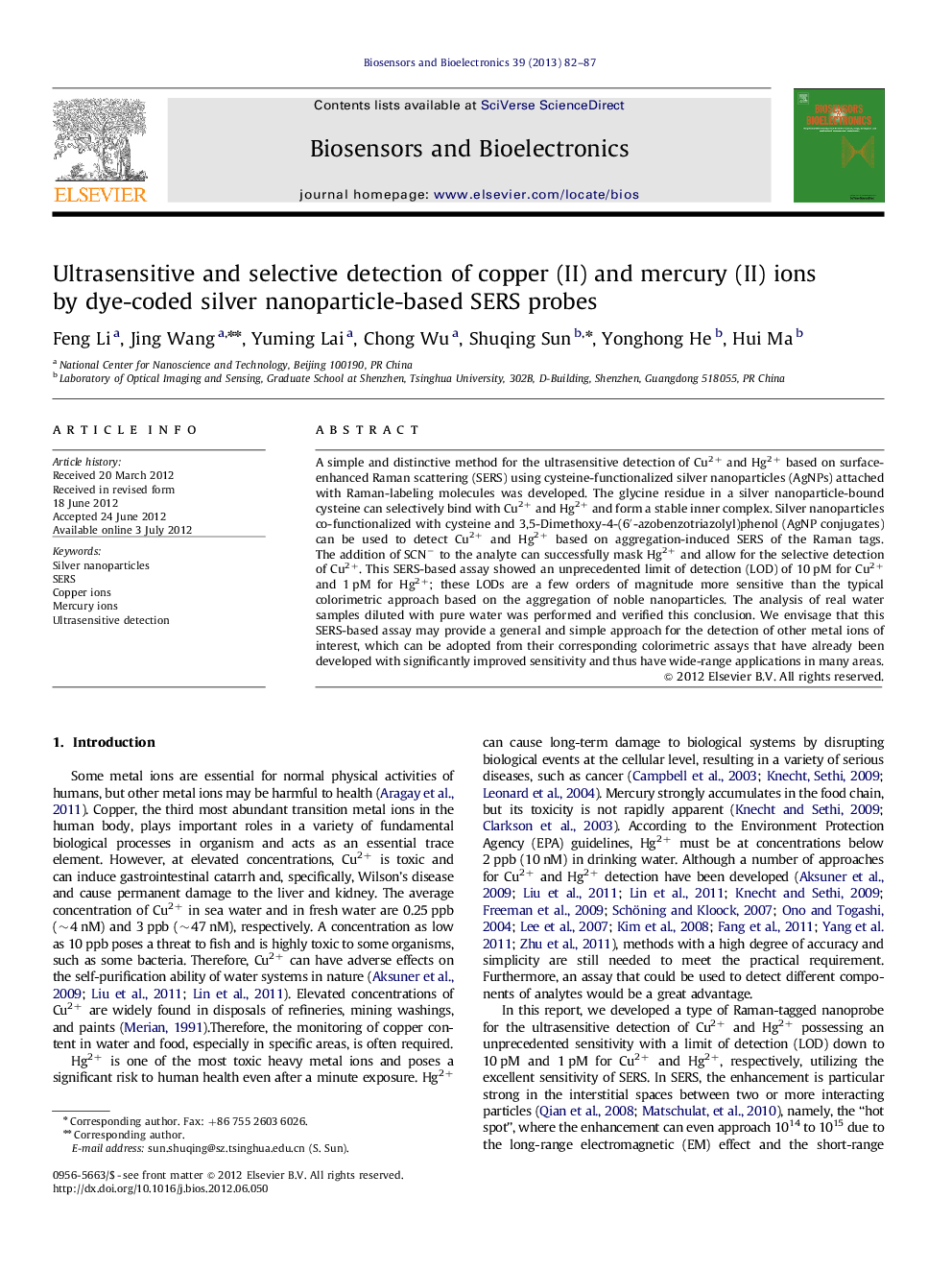| Article ID | Journal | Published Year | Pages | File Type |
|---|---|---|---|---|
| 867210 | Biosensors and Bioelectronics | 2013 | 6 Pages |
A simple and distinctive method for the ultrasensitive detection of Cu2+ and Hg2+ based on surface-enhanced Raman scattering (SERS) using cysteine-functionalized silver nanoparticles (AgNPs) attached with Raman-labeling molecules was developed. The glycine residue in a silver nanoparticle-bound cysteine can selectively bind with Cu2+ and Hg2+ and form a stable inner complex. Silver nanoparticles co-functionalized with cysteine and 3,5-Dimethoxy-4-(6′-azobenzotriazolyl)phenol (AgNP conjugates) can be used to detect Cu2+ and Hg2+ based on aggregation-induced SERS of the Raman tags. The addition of SCN− to the analyte can successfully mask Hg2+ and allow for the selective detection of Cu2+. This SERS-based assay showed an unprecedented limit of detection (LOD) of 10 pM for Cu2+ and 1 pM for Hg2+; these LODs are a few orders of magnitude more sensitive than the typical colorimetric approach based on the aggregation of noble nanoparticles. The analysis of real water samples diluted with pure water was performed and verified this conclusion. We envisage that this SERS-based assay may provide a general and simple approach for the detection of other metal ions of interest, which can be adopted from their corresponding colorimetric assays that have already been developed with significantly improved sensitivity and thus have wide-range applications in many areas.
► A simple method for ultrasensitive detection of Cu2+ and Hg2+ based on SERS is developed. ► Extreme low detection limit of 10 pM and 1 pM is achieved for Cu2+ and Hg2+, respectively. ► Use of SCN− can successfully mask Hg2+ and allows the exclusive detection of Cu2+ ion.
